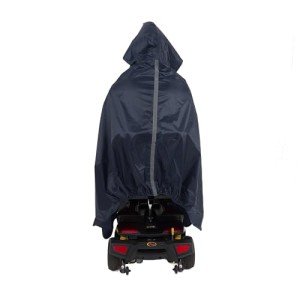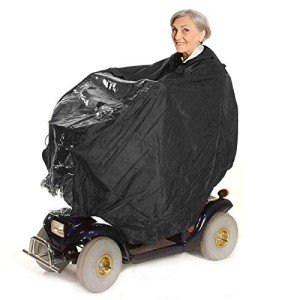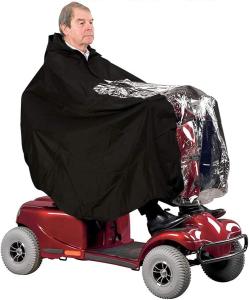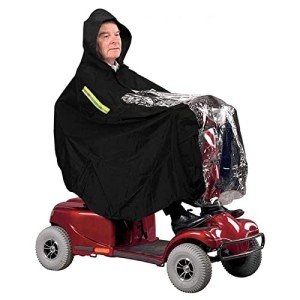As urban environments continue to embrace cycling and scootering as transportation alternatives, the demand for practical yet stylish apparel grows. Among the essential clothing items that cater to this need is the waterproof cape. Combining fashion with functionality, these capes provide a reliable solution to unpredictable weather while enhancing the rider's overall appearance. This guide delves into the various aspects of stylish waterproof capes, how they benefit cyclists and scooter enthusiasts, and answers to frequently asked questions about this innovative outerwear.
The Need for Waterproof Capes in Urban Mobility
Urban mobility faces constant challenges from environmental factors. Rain, wind, and unpredictable weather patterns can make cycling and scootering uncomfortable and hazardous. Traditional rain gear, such as jackets and ponchos, often fails to provide adequate protection or does not blend well with contemporary styles. Hence, the waterproof cape has emerged as an appealing alternative, offering the following advantages:
Benefits of Waterproof Capes
-
Protection Against Elements: Waterproof capes shield riders from rain and wind, keeping them dry and comfortable during their journeys.
-
Breathability: Many modern capes are designed with breathable materials, allowing sweat and moisture to escape while preventing water from entering.
-
Stylish Versatility: With design advancements, capes now come in an array of colors, patterns, and styles, enabling riders to express their personality while staying stylish.
-
Ease of Use: A cape is easy to put on and take off, offering a hassle-free experience for those on the go.
-
Lightweight and Portable: Many waterproof capes are lightweight and can be easily folded or packed away, making them convenient for commuters.
-
Layering Potential: They can be worn over other clothing or layers, making them versatile for different weather conditions.
Choosing the Right Waterproof Cape
When choosing a waterproof cape for cycling or scootering, various factors should be considered. Here are some key attributes to look for:
-
Material: Opt for capes made from high-quality waterproof material, such as Gore-Tex or polyurethane-coated fabrics, known for their durability and performance.
-
Fit: Capes should have a comfortable fit that allows freedom of movement while riding. Look for adjustable elements like drawstrings or Velcro straps.
-
Size and Length: Select a cape that offers sufficient coverage without hindering mobility. Longer capes may offer additional protection for legs but could be cumbersome for some riders.
-
Style: With various designs available, pick one that complements your style. Opt for vibrant colors or patterns that stand out or classic shades for a more subdued look.
-
Reflective Elements: Safety is paramount when riding at night or in low-light conditions. Choose capes with reflective features to enhance visibility.
-
Pockets and Features: Some capes come with functional pockets for storage, which can be a useful addition for carrying small items like keys or a phone.
Popular Styles of Waterproof Capes
Waterproof capes are available in numerous styles to cater to diverse tastes. Here are some popular types:
-
Classic Poncho Style: Typically oversized, these capes drape comfortably over the body, providing ample coverage.
-
Stylish Over Cape: Often designed with fashionable cuts, these capes are excellent for making a statement while offering protection.
-
Urban-Casual Fit: A tailored fit that blends well with street style and casual attire, ideal for daily commuting.
-
Reflective Safety Cape: Equipped with bright colors and reflective panels for nighttime visibility, these capes prioritize safety.
-
Packable Capes: Lightweight and compact, these capes can easily fit into a bag, perfect for on-the-go lifestyles.
Frequently Asked Questions (FAQs)
1. Are waterproof capes suitable for all weather conditions?
Answer: While waterproof capes are effective against rain and wind, their performance may vary with different weather conditions. They are not designed for extremely cold temperatures unless layered correctly.
2. How do I maintain my waterproof cape?
Answer: To maintain your waterproof cape, follow the manufacturer's care instructions. Generally, it involves washing with mild detergents, avoiding fabric softeners, and air-drying to preserve the waterproof coating.
3. Can I wear a waterproof cape over other jackets?
Answer: Yes, waterproof capes are designed in a way that allows them to be worn over other layers. Ensure that the cape has enough room for comfortable movement.
4. Will wearing a cape while cycling affect my balance?
Answer: A well-fitted cape should not affect balance or mobility. It's essential to choose one that allows free movement without excessive bulk.
5. What is the price range for stylish waterproof capes?
Answer: The price of waterproof capes varies widely based on brand, material, and features, typically ranging from £30 to £150.
Stylish waterproof capes for cycling and scooters serve as a perfect blend of utility and aesthetics. They provide essential protection against the elements while allowing riders to express their sense of style. Whether you're commuting to work, running errands, or leisurely exploring the city, investing in a high-quality waterproof cape can enhance your riding experience.
In summary, an ideal waterproof cape should boast durability, comfort, and fashionable design—ensuring that you look good while staying dry, no matter the weather. As urban mobility continues to evolve, so does the importance of thoughtful and functional clothing choices, making waterproof capes a must-have for every modern commuter.






